This is an unabridged version of a recent case study prepared by PlanSea, Vysus Group & SICCAR, published in the recent OEUK Supply Chain Report.
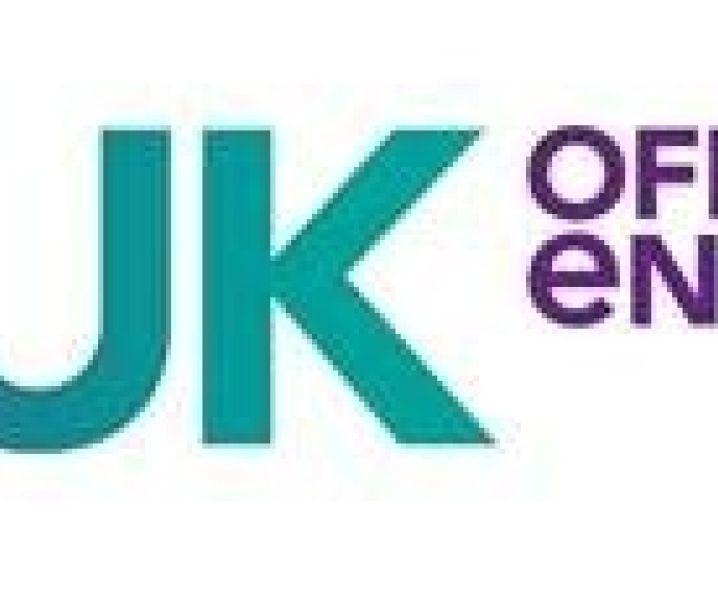
The UKCS needs to continue recent good work on emissions and cost reduction with a logical evolution to a more collaborative approach in areas like marine logistics where cost savings and CO2 reductions are sought.
The sector faces challenges from North Sea Transition Agency Stewardship Expectations 11 (Net Zero) and 12 (Supply Chain Collaboration and Cooperation) as well as requirements around ESG reporting and non-financial disclosure. This takes account of IFRS SASB and other schemes for investment decision making.
The International Sustainability Standards Board (ISSB) voted in October 2022 to enhance IFRS reporting standards for greenhouse gas (GHG) emissions to incorporate Scope 3 emissions. As a result, all operators will be required to report supply chain emissions where deemed material based upon the GHG Protocol Corporate Standard. The GHG Protocol Corporate Standard requires companies to have in place effective emissions inventory quality processes and reporting standards and to have emissions verified and GHG reduction targets assigned.
The increased complexity of such operations and the need for accredited monitoring and reporting has brought three organisations together, in a logical service sector collaboration to provide the industry with a comprehensive solution that at its core, deploys artificial intelligence (AI) to optimise operations.
The combined offering from PlanSea, Vysus Group and SICCAR will also contribute towards ameliorating the impact of marine resource shortages now being predicted.
The three organisations have a joint vision to improve operating efficiencies for operators and the offshore renewables sector, by reducing costs and Scope 1, 2 and 3 emissions by applying AI-based software, block chain and specialist emissions management capability.
PlanSea uses AI to find more efficient routing opportunities for vessels, Vysus Group uses emissions modelling expertise to calculate accurate metrics of emissions reductions, and SICCAR uses block chain to provide assurance of reported fuel consumption and operational activity.
Building on previous work, emissions and blockchain functionality will be integrated into PlanSea’s suite of software tools. This will enable users to minimise emissions and costs through scenario/option evaluations and ongoing performance monitoring.
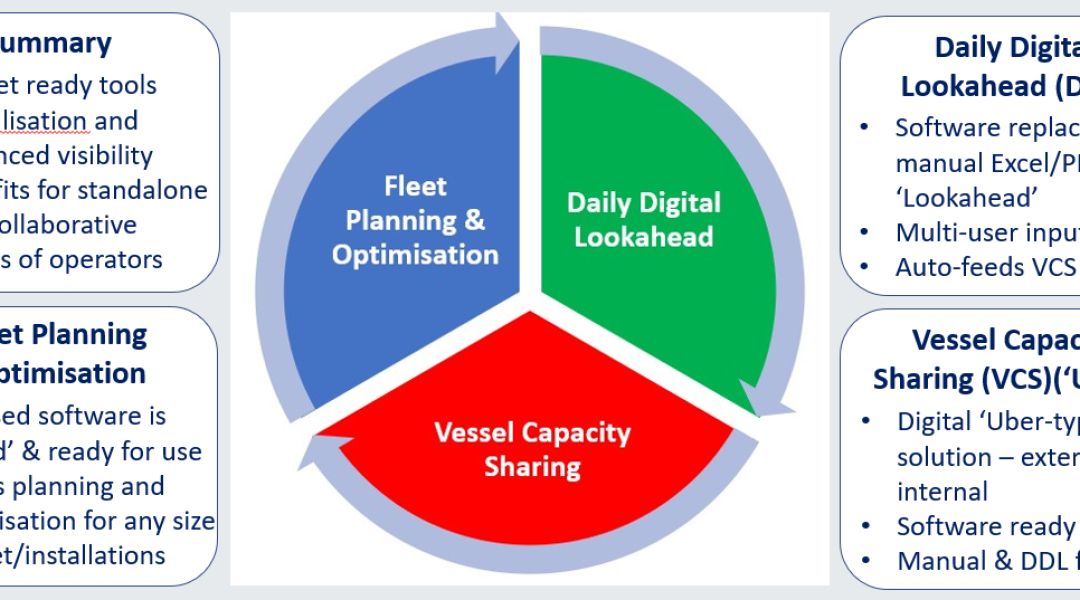
Software can accommodate renewables, subsea & decom
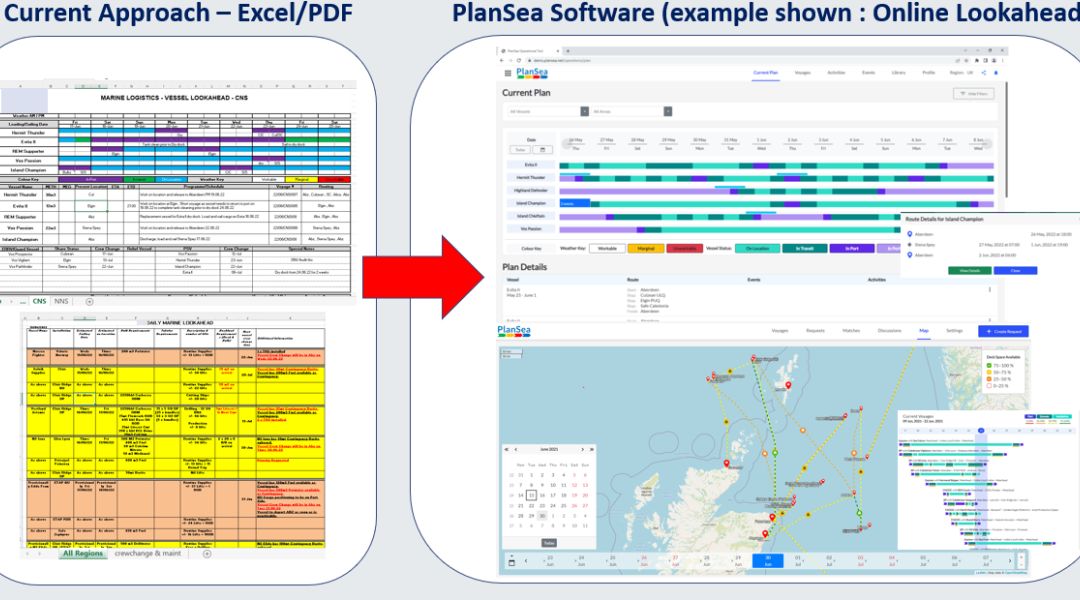
A digital transformation with enhanced visibility can be achieved
The benefits to the end user include compliance with expectations, policy, codes and standards, improved efficiencies and reduced operational costs, lower emissions and the creation of a platform for new business models.
Key benefits at a glance:
- Emissions reduction – through use of AI and an ’Uber’ app approach
- Easy and quick evaluation of future vessel requirements – including weather/vessel speeds/fuel use and stress testing of standalone and collaborative operational pooling scenarios
- Enhanced HSE – reduced risk/exposure through minimising vessel time at sea
- Emissions visibility, reporting, forecasting and options evaluation in-built
- A full digital transformation of marine logistics e.g. an online ‘real-time’ operational visibility replacing e-mailed ‘lookahead’ pdfs and spreadsheet.
- Real-time visibility/stakeholder input capability
- Budgeting & reporting functionality – both financial and emissions related
- All part of an integrated and interactive suite of applications
- Facilitates collaboration between operators
- Contributes towards ameliorating the impact of marine resource shortages now being predicted
- An online platform for new business models
- Approach can also be applied to optimise P&A and other subsea operational campaigns
Extensive research has been undertaken into UKCS operational activity in conjunction with operators and other stakeholders. This has allowed computations based on actual vessel and cargo movements and allowing both for delivery deadlines being met and maximum efficiencies secured. Factors like weather, needs for dedicated vessels or extended offshore positioning - are all catered for in the software.
Results of our study show the potential benefits of using our software suite on a collaborative basis allied to accredited emissions reporting and monitoring.
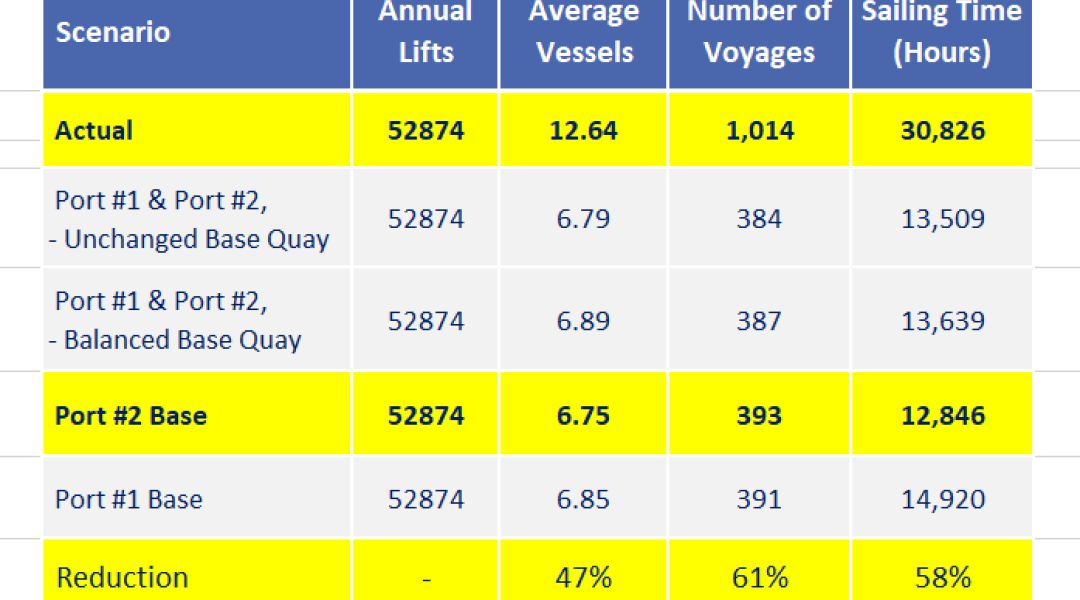
Multi-user and pooled scenarios (3 operators, multi-port annual activity)
Using the collaborators’ highly developed tools, the substantially reduced emissions outcomes for the above scenarios can also be calculated using accredited methodology:
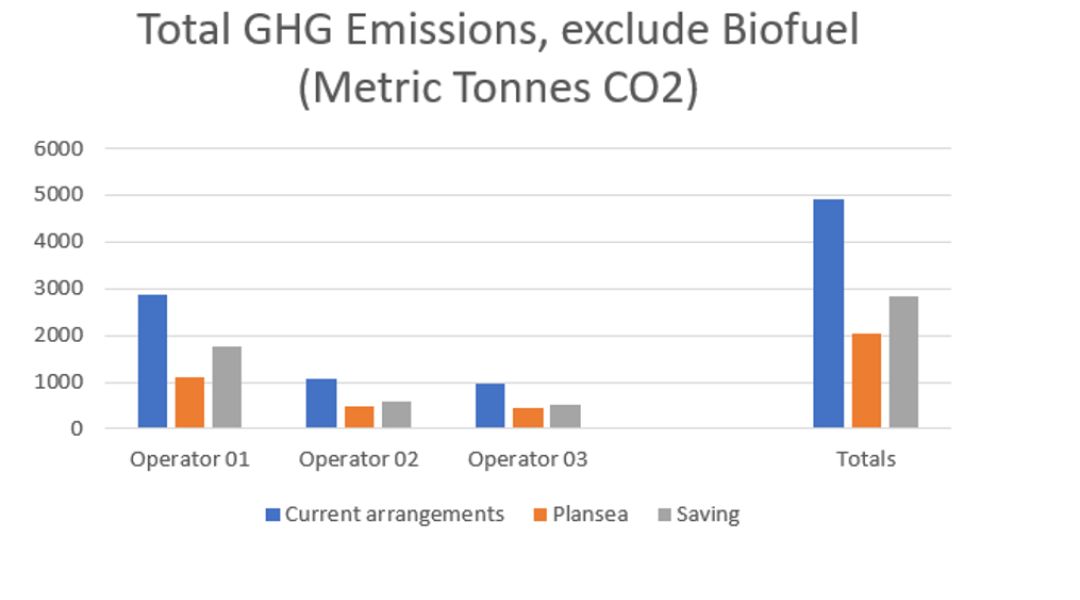
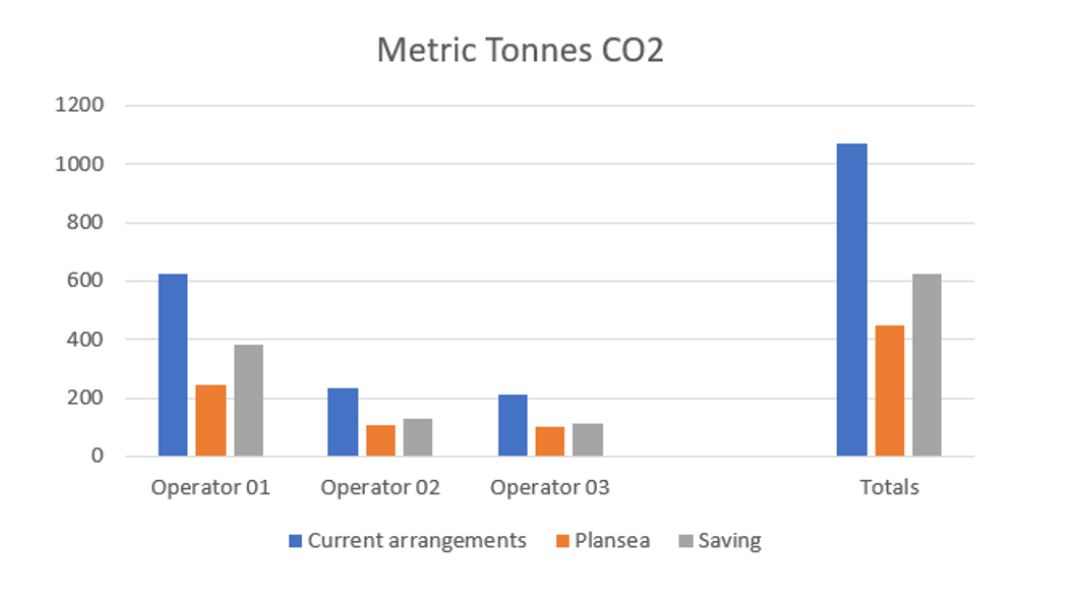
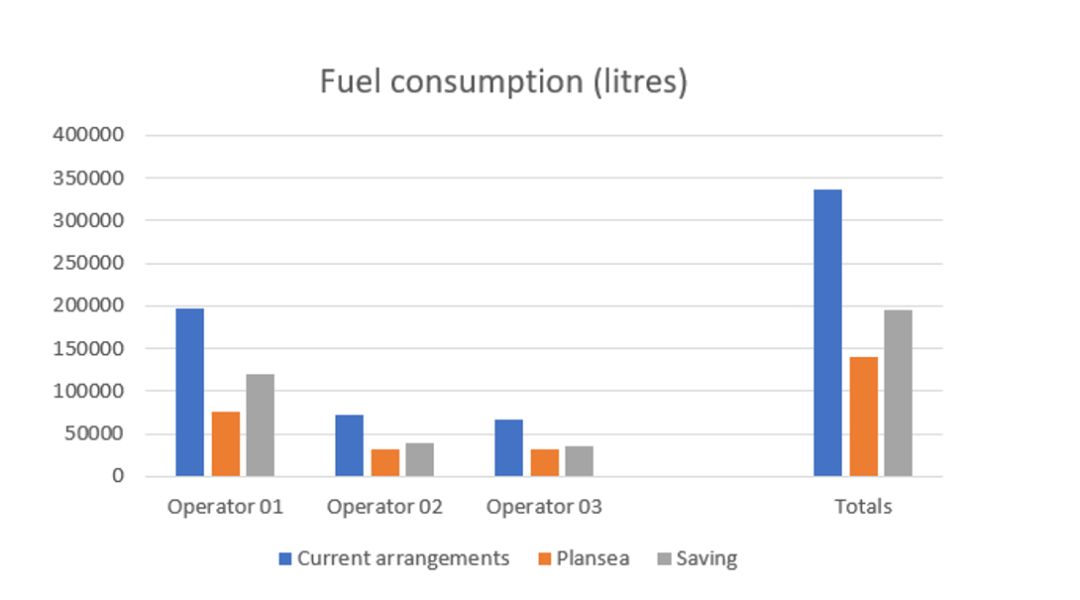
Comparison of vessel activity data using the PlanSea AI software vs baseline vessel figures shows a clear reduction in CO2 emissions per tonne fuel burned. NB Emission factors reflect location and vessel. Use has been made of approved DEFRA/GHG Protocol, OGUK default figures or an agreed alternative.